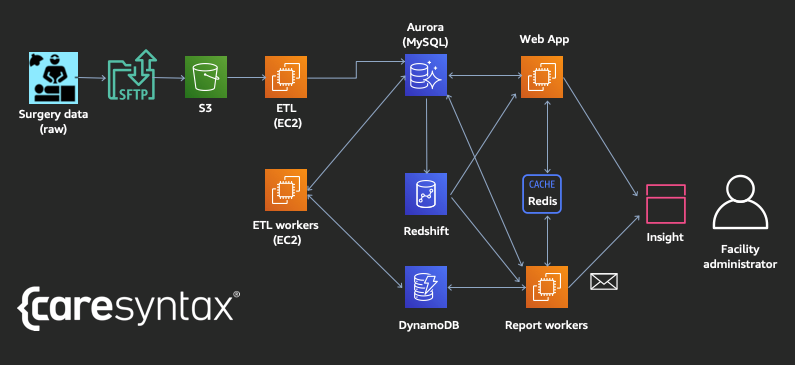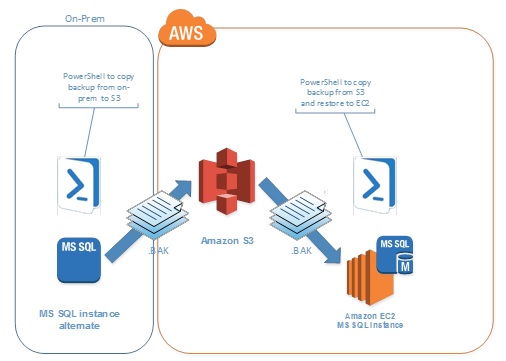AWS Database Blog
Tag: Amazon EC2
Manage Amazon RDS Custom for SQL Server CEV AMIs using EC2 Image Builder
Amazon Relational Database Service (Amazon RDS) Custom for SQL Server allows you to use a custom engine version (CEV) by providing an Amazon Machine Image (AMI), which includes specific customizations and database media installed on it. In this post we provide you guidance and best practices to build, test, and distribute AMIs using an EC2 Image Builder pipeline.
How caresyntax uses managed database services for better surgical outcomes
This is a guest post from Ken Wu, Chief Technology Officer, and Steve Gordon, Director of Engineering at caresyntax. caresyntax provides the needed tools to make surgery smarter and safer. Our solutions use IoT, analytics, and AI technologies to automate clinical and operational decision support for surgical teams and support all outcome contributors. We help […]
Setting up passwordless login from Amazon EC2 Windows and Linux instances to Amazon RDS Oracle database instances
In today’s world, every organization uses a centralized location to store and manage user credentials. The most commonly used service for this is Microsoft Active Directory (AD). Organizations use LDAP protocol to authenticate users to their peripheral devices, but fewer companies use this centralized credential store to allow users to log in to their databases. […]
Migrating PostgreSQL from on-premises or Amazon EC2 to Amazon RDS using logical replication
PostgreSQL is one of the most advanced popular open-source relational database systems. With more than 30 years of development work, PostgreSQL has proven to be a highly reliable and robust database that can handle a large number of complicated data workloads. For many, PostgreSQL is the open-source database of choice when migrating from commercial databases […]
Getting started with Amazon DocumentDB (with MongoDB compatibility); Part 1 – using Amazon EC2
Amazon DocumentDB (with MongoDB compatibility) is a fast, scalable, highly available, and fully managed document database service that supports MongoDB workloads. You can use the same MongoDB 3.6, 4.0 or 5.0 application code, drivers, and tools to run, manage, and scale workloads on Amazon DocumentDB without having to worry about managing the underlying infrastructure. As […]
Migrating your on-premises SQL Server Windows workloads to Amazon EC2 Linux
For decades, IT administrators could only run their SQL Server workloads on Windows. However, as of SQL Server 2017, SQL Server is now available to run in the Linux operating system. For IT administrators, this represents an opportunity to run SQL Server workloads on their preferred operating system, save on Windows Server licensing costs, and […]
Automated query caching into Amazon ElastiCache for Amazon RDS, Amazon Aurora and Amazon Redshift
This is a guest blog post by Erik Brandsberg, CTO at Heimdall Data, in partnership with AWS Technical Evangelist Darin Briskman. Heimdall Data is an AWS Advanced Technology partner who in their own words “offers a database proxy on the AWS Marketplace that supports SQL query caching into Amazon ElastiCache for Redis without code changes. […]
Best storage practices for running production workloads on hosted databases with Amazon RDS or Amazon EC2
October 2023: This post was reviewed and updated for accuracy. AWS offers multiple options to host your databases serving OLTP workloads – host your own managed database on Amazon EC2 instances or use Amazon RDS managed by AWS. RDS manages high availability, automated backups, database upgrades, OS patches, security, and read replica. RDS also offers […]
Bootstrapping Your Large Production On-Premises SQL Server Databases to Amazon EC2
This blog post explains how to use PowerShell and native Microsoft SQL Server backups to migrate an on-premises SQL Server database to an Amazon EC2 instance. In general, we recommend that where possible you should make every attempt to migrate your on-premises SQL Server databases to Amazon RDS. You can find more details on how […]
New, Memory-Optimized Amazon EC2 Instance Types Drive Database Workloads
Perfectly sized instances for maximizing Microsoft SQL Server Standard In September, Amazon Web Services announced availability of the new Amazon EC2 x1e.32xlarge instance type with 128 vCPU and 3,904 GiB of memory. Since that announcement, we have heard from customers that they want more instance configuration choices with fewer vCPUs, while maintaining a high ratio […]









